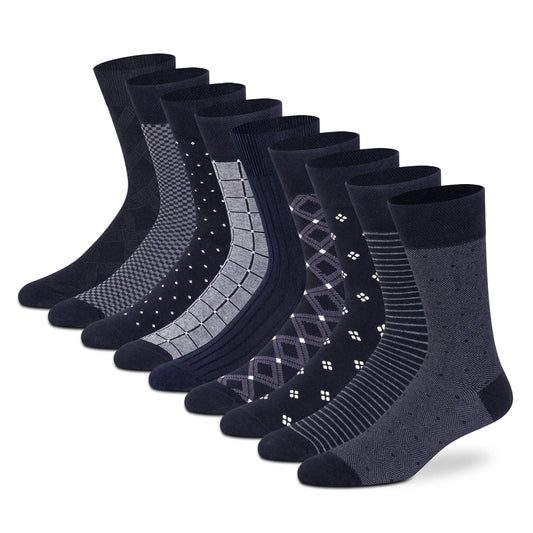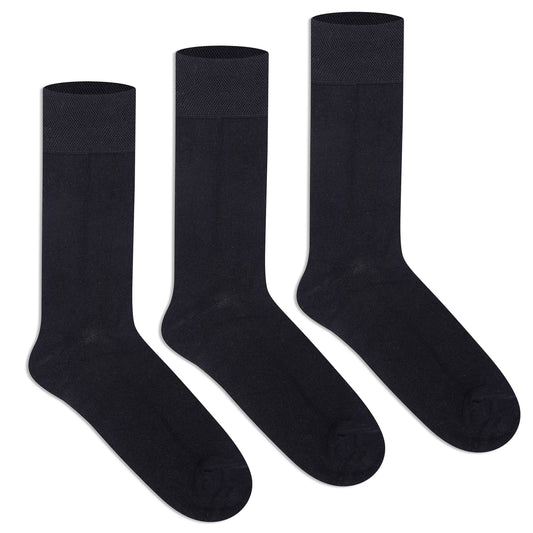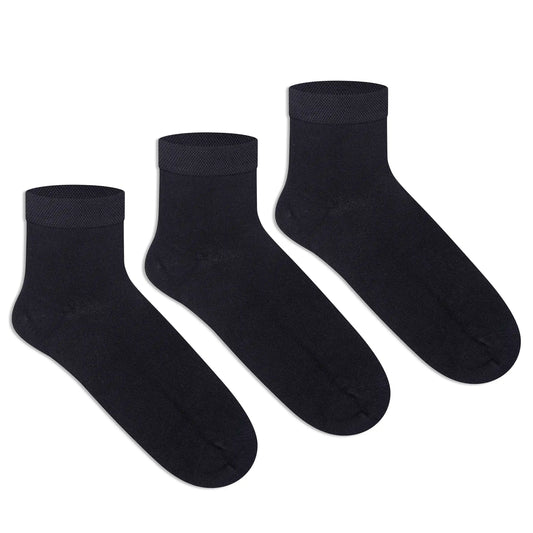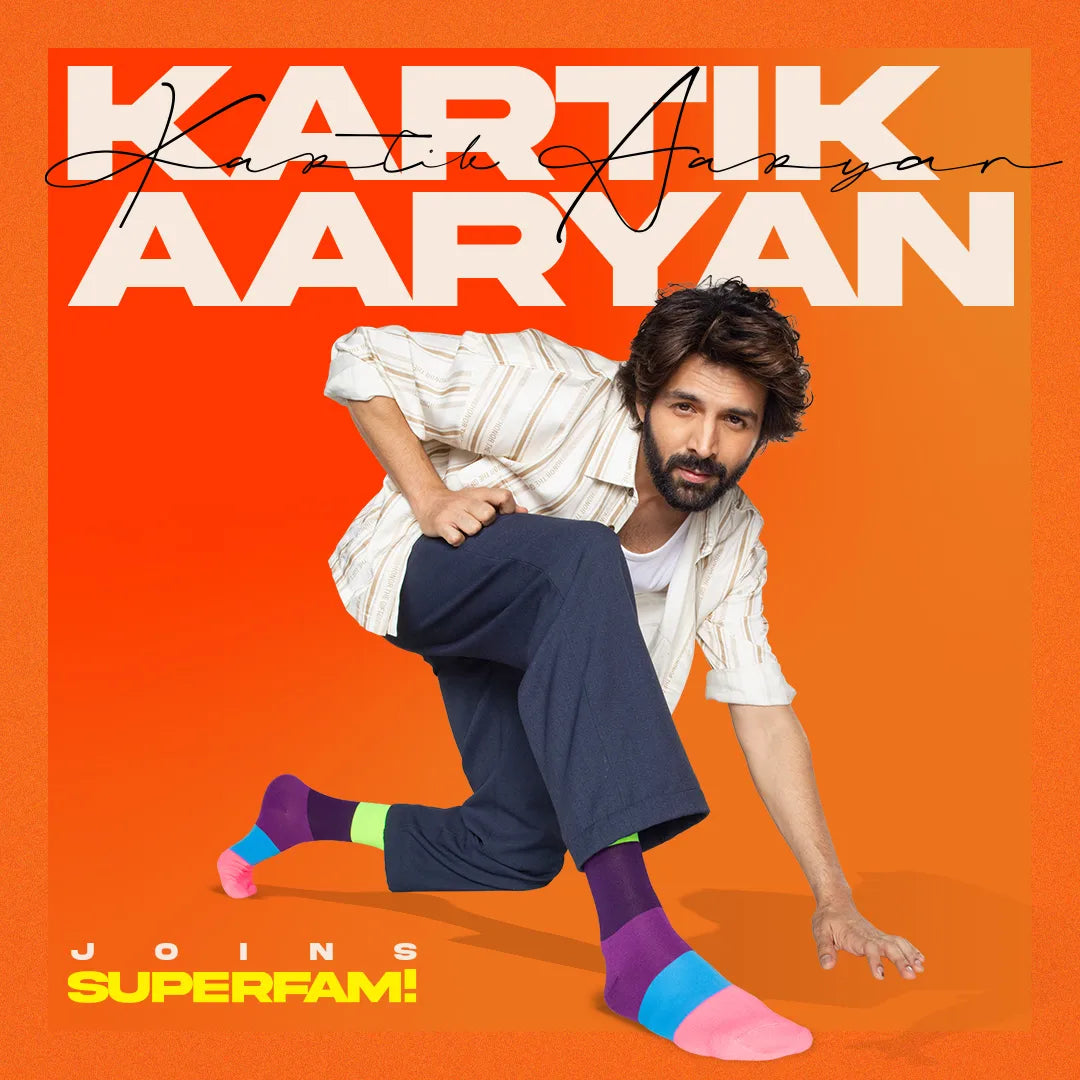The Only Sock Care Guide You Need This Monsoon
Let's be honest, monsoon season and dry socks rarely go hand in hand. You step out looking fresh, and within minutes, your feet are clothed in damp socks. This experience is far from pleasant. After conducting extensive research and testing, we’ve discovered that the solution lies in understanding exactly how to keep your socks game strong during the wettest months.
Why Your Regular Socks Are Failing You
That drawer full of cotton socks you've collected? They're basically sponges during the monsoon. Cotton holds onto moisture like it's going out of style. Once wet, they stay wet, creating this ideal breeding ground for bacteria that'll have your colleagues subtly moving away from you in meetings.
Getting Smart About Waterproof vs Water Resistant Shoes
Here's something that can be confusing for many - the real difference between waterproof vs water resistant shoes. It matters way more than you'd think for your sock health.
Water resistant vs waterproof shoes is more than just a subtle distinction. Water resistant shoes are like those light jackets that work fine until it actually starts pouring. They'll handle some splashing and light drizzle, but once you hit proper puddles, your feet are soaked.
Waterproof shoes, on the other hand, are the heavy-duty raincoats of footwear. They provide complete protection, even when you're basically walking through rivers disguised as streets.
The difference between water resistant vs waterproof shoes completely changes your sock strategy. With waterproof shoes, you can get away with regular moisture-wicking socks. But with water-resistant ones? You need backup plans.
This is where waterproof socks for shoes become game-changers. These aren't your regular socks with some spray-on coating. We're talking about proper engineering - outer layers that repel water, middle membranes that block moisture, and inner layers that actually feel good against your skin.
The Monsoon Sock Arsenal You Actually Need
Consider these key factors when curating your monsoon sock collection:
Morning Commute Socks: These need serious moisture-wicking power. Bamboo socks can be transformative in this regard. They're naturally antibacterial (your nose will thank you!), and they dry incredibly fast.
All-Day Office Wear: You need something that can handle air conditioning, then sudden humidity when you step outside. The modal socks from Supersox's Zero Collection are remarkably soft but tough enough to handle temperature swings without becoming uncomfortable.
Weekend Adventures: Crew socks give you that extra coverage when you're dealing with rain boots or higher shoes. Just make sure you dry them properly - that extra length means more places for moisture to hide.
The Sock Drying Game Everyone Gets Wrong
While this may seem straightforward, most people completely mess up sock drying during the monsoon. Hanging them outside? Protection fails completely - they'll just absorb more humidity. Stuffing them in closed spaces?
What actually works is creating air circulation indoors. Setting up a small fan near your drying area can cut drying time in half.
The Importance of Sock Rotation
You can't survive the monsoon with just five pairs of socks. This common mistake leads to constantly wearing slightly-damp socks because nothing has time to properly dry. Maintaining at least ten pairs in rotation makes a significant difference.
The math is simple - if socks take 24-48 hours to completely dry in humid weather, and you're wearing one pair daily, you need enough backup pairs to never run out of dry options.
Waterproof Socks for Shoes - Worth the Hype?
Waterproof socks for shoes have proven effective during particularly challenging monsoon conditions. These products actually work. Your feet stay dry, they're surprisingly comfortable, and you don't get that awful squishy feeling when you step in puddles.
They're not replacing all your regular shoes, but for those days when the weather forecast looks terrifying, they're lifesavers.
The Care Routine That Actually Works
Say goodbye to complicated multi-step processes. Here's an effective routine that works consistently:
Immediately After Getting Wet: Remove socks immediately. No sitting around in damp socks hoping they'll air-dry while you're wearing them. That's just asking for fungal problems.
Washing Strategy: Wash small loads frequently rather than waiting for full loads. Moisture-wicking socks need proper care, and overcrowded washing machines don't clean effectively.
Drying Setup: Indoor drying station with a fan. While not aesthetically pleasing, this method is effective. Avoid direct heat sources because they can damage the special fibers that make good socks actually good.
Troubleshooting Common Issues
Sock Odor Problems: Vinegar soak before washing. The acid eliminates bacteria responsible for causing odor.
Socks Never Fully Dry: You need better air circulation and possibly a dehumidifier. Humidity levels in most homes during monsoon are often too high for natural drying.
Colors Fading Fast: Avoid hot water and direct sunlight. Both are excessive for quality socks and actually damage the fibers.
Uncomfortable Wet Feeling: You're probably wearing the wrong material or size. Socks that are too tight trap moisture, and cotton socks will always feel uncomfortable when damp.
Building Your Monsoon Sock Care Strategy
The socks for men and women's socks collections from Supersox are designed with these exact challenges in mind. They understand that monsoon isn't just about keeping water out - it's about managing the moisture that inevitably gets in.
Different socks serve different situations effectively. Lightweight, breathable ones work well for air-conditioned offices. Heavier, quick-drying ones suit outdoor work. Antimicrobial options are ideal for long days when changing socks isn't possible.
The Investment Mindset
Quality monsoon socks aren't inexpensive, but neither is constantly replacing ruined shoes, dealing with foot problems, or the social cost of smelly feet. Investing more in socks proves worthwhile when you consider the benefits.
Consider this - you spend eight to twelve hours daily in your socks. During monsoon, they're working harder than almost any other piece of clothing you own. Investing in quality makes sense.
What's Coming Next in Sock Technology
The textile industry continues improving moisture management. New antimicrobial treatments last longer. Synthetic materials feel more natural. Manufacturing processes create better moisture-wicking without sacrificing comfort.
Supersox stays ahead of these trends because they're not just selling socks - they're solving the specific problems that monsoon weather creates for your feet.
Material Science Made Simple
SuperKnit Industries (Supersox's parent company) has spent over two decades developing textile technology. They hold numerous global certifications - WRAP, CTPAT, SA8000, and others that demonstrate their expertise.
For your feet, different materials handle moisture completely differently. Merino wool is fantastic but expensive. Bamboo is naturally antimicrobial and reasonably priced. Modal feels luxurious and performs well. Synthetic blends can be excellent if engineered properly.
The key is understanding that inexpensive cotton socks aren't just less comfortable during monsoon - they're actually working against you.
Final Thoughts
Monsoon season doesn't have to mean suffering through months of uncomfortable, smelly feet. With the right socks, proper care routines, and strategic planning, you can actually stay comfortable even when the weather is doing its worst.
The difference between struggling through monsoon and thriving during it often comes down to the basics. Socks are definitely basics that most people get wrong.
At Supersox, we have built our reputation on understanding exactly these challenges. We combine traditional textile expertise with modern material science to create products that actually work when you need them most.
We use 300+ world-class knitting machines and technology, like Silver Frost technology, to create comfortable, breathable, and long-lasting socks, perfect for any situation. Once you experience properly designed waterproof socks for shoes, you'll wonder how you ever survived without them.
FAQs
Can I wear socks with waterproof shoes? Absolutely! In fact, pairing breathable, moisture-wicking socks like Supersox bamboo socks with waterproof shoes adds an extra layer of comfort and odour control. It also prevents sweaty buildup inside sealed shoes.
How do I keep socks dry during the monsoon? Start with water-resistant or waterproof shoes, and always carry a backup pair of socks. Opt for quick-dry options like modal or bamboo socks from Supersox to reduce moisture retention and drying time.
What's the best sock material for rainy weather? Bamboo and modal are excellent for monsoon conditions. Our bamboo socks are designed to be antibacterial, breathable, and fast-drying, perfect for humid, wet weather.
Are waterproof socks breathable? Premium waterproof socks for shoes feature layered construction: a breathable membrane sandwiched between moisture-wicking inner fabric and a water-repelling outer layer. This keeps water out while still allowing airflow.
How often should I wash socks in monsoon? Ideally, wash after every wear. Monsoon moisture encourages bacterial buildup, so rotating clean, dry socks daily is key. We source the highest quality yarn and leverage Silver Frost technology to keep our socks fresh, wash after wash, without losing comfort or shape.













